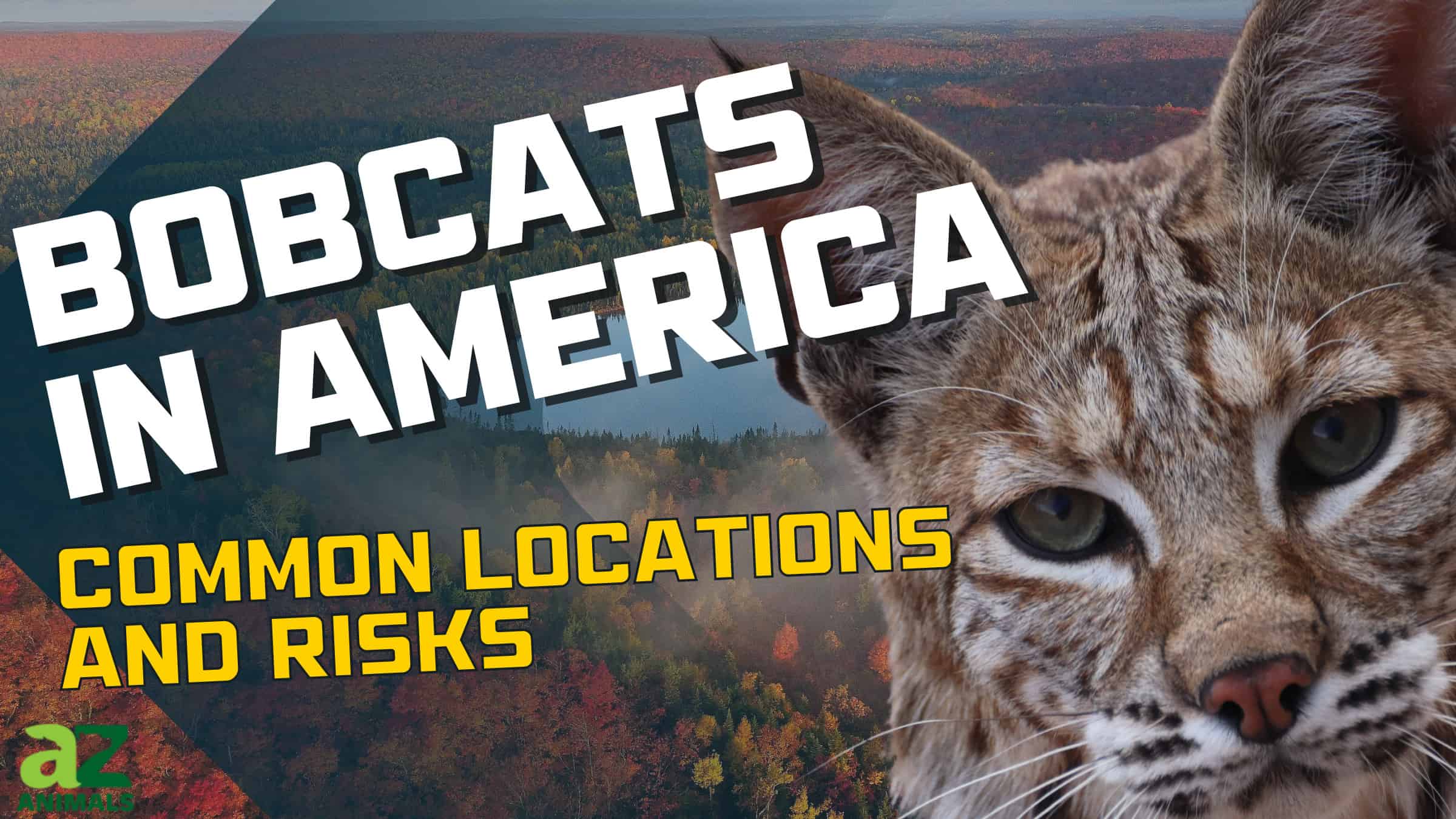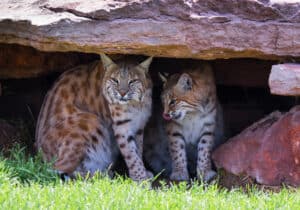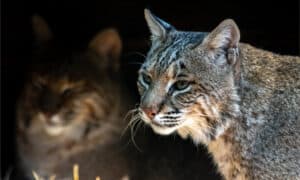Bobcats are one of wildlife conservation’s greatest success stories in most of the United States. Whereas population decline occurred in Midwest states, leading to local extinction in states like Iowa and Ohio, a rebound led to growing populations from the 1990s until now. Except for Delaware, all 48 contiguous United States report bobcat populations. So, with bobcats existing almost anywhere in the United States, you might wonder about the likely places to encounter bobcats.
Unfortunately, these wild cats are some of the most elusive species you will find. They notoriously lead nocturnal l-ives, coming out rarely during the day, and like to stick around places with good cover. However, there are some areas where you might have more luck encountering a bobcat. Check out the top places you will most likely encounter a bobcat in the United States and whether they are associated with any risks.
1. California
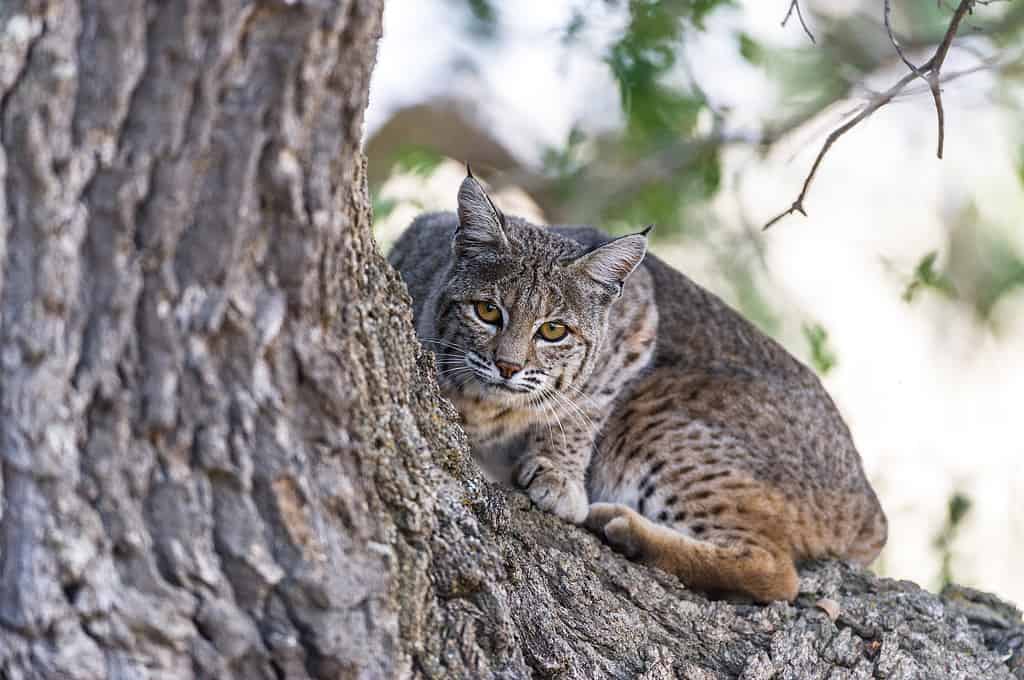
Pay attention to covered habitats in southern California, including chaparral, sagebrush, and thick brush.
©iStock.com/brentawp
Estimates put California bobcat populations between 70,000 and 100,000, making it a likely state to run into one. However, the California Department of Fish and Wildlife emphasizes that bobcats dislike human contact and rarely display aggression. If you want a likely place to encounter a bobcat in California, state and national parks like Point Lobos State Natural Preserve, Toro Park, and Pinnacles National Park are great options.
2. Texas
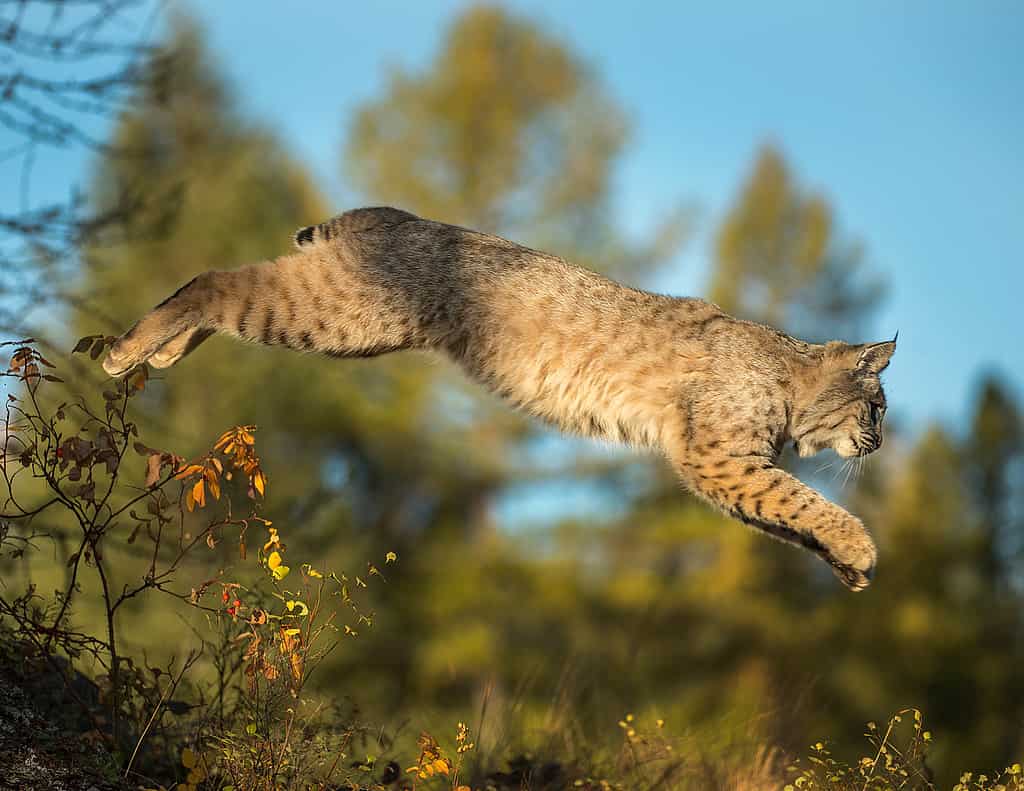
Scratch marks on tree trunks are one way to look out for bobcats in your area of Texas.
©Chris Desborough/Shutterstock.com
All over the state of Texas, bobcats are thriving. As many as 200,000 bobcats live throughout the state. If you want one spot to pay particular attention to, consider hanging around the brush country of south Texas. One statistic estimates one bobcat per less than one square mile in the south. Bobcats often hunt at night, making it less likely for humans to encounter them during the day.
3. North Carolina
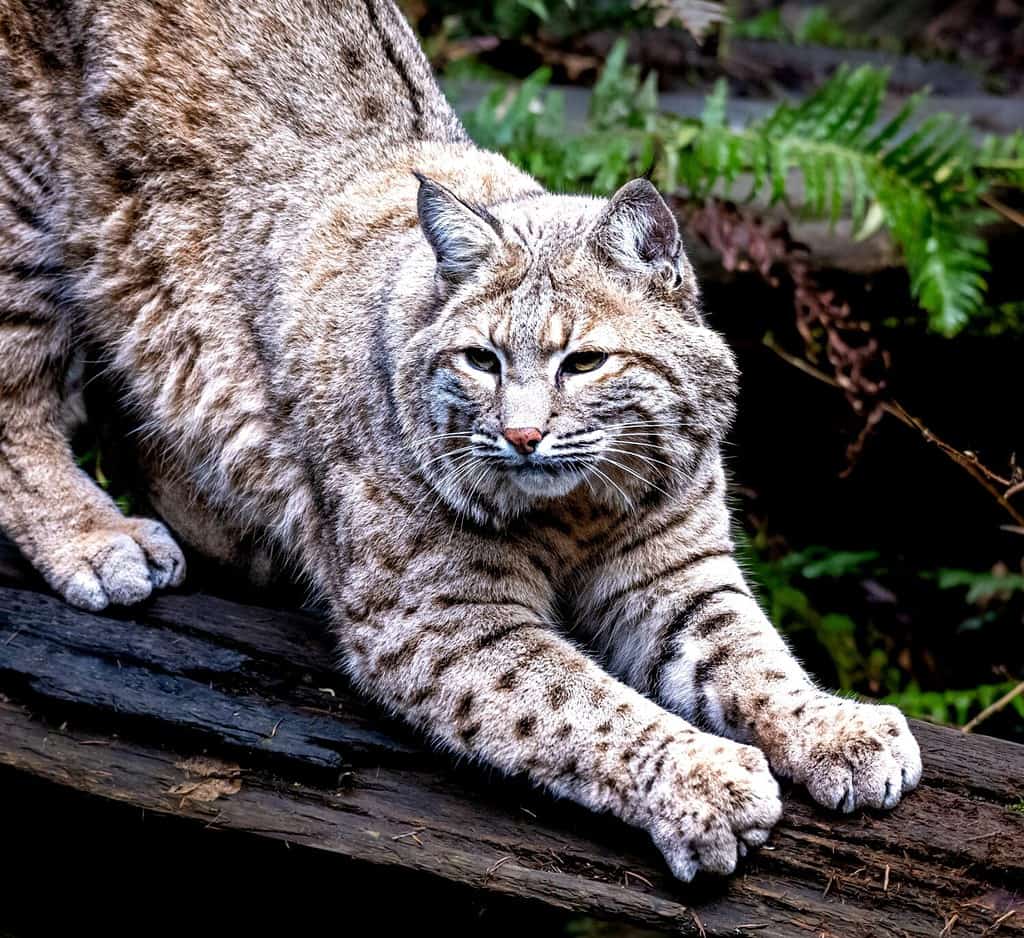
Researchers find that bobcats make rock piles, brush piles, and hollow trees into their dens throughout the Great Smoky Mountains National Park.
©Jeff Westhead/Shutterstock.com
Over 125,000 bobcats call North Carolina home, and the population is growing. According to the North Carolina Wildlife Resources Commission, the largest numbers of bobcats are in wooded areas of the Coastal Plain region and mountains. This wild cat lives all over the rest of the state but prefers the coverage of bottomland hardwoods and swamps in the east and mature mountain forests. Although these are the likely places to encounter a bobcat in North Carolina, you can easily miss them unless you are out at night.
4. Colorado
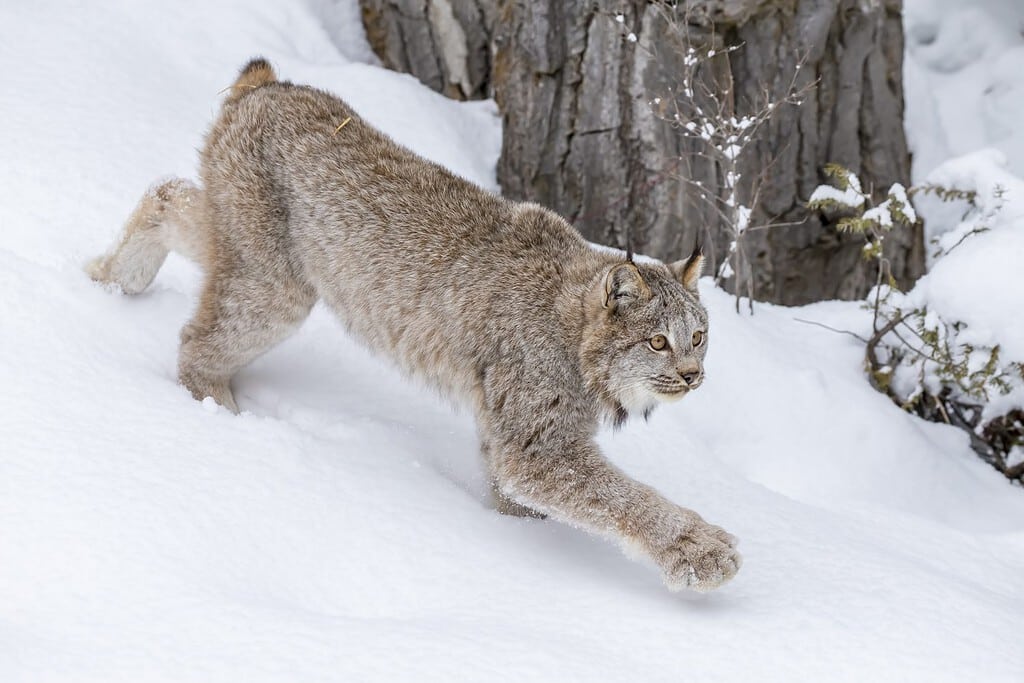
As bobcats lose traditional habitats and prey sources, more encounters are occurring in Colorado despite having fewer estimated bobcats than in other states.
©Grindstone Media Group/Shutterstock.com
Due to its adaptability, the bobcat lives in a variety of habitats. In Colorado, it easily makes its home in juniper woodlands and snowy landscapes. The risk of encountering a bobcat in a more urban area depends on the level of distance from wooded or rocky spaces. Because these wild cats prefer cover, they may wander into a residential area if it abuts a patch of forest. Keeping pets inside during dark hours, especially dusk and dawn, is advised.
5. Georgia

The most likely places to encounter a bobcat in Georgia are mixed forests and agricultural areas with plenty of wooded growth on the margins. Typically, wildlife authorities in Georgia do not classify bobcats as a nuisance. They avoid places with lots of human activity and do not openly attack people.
6. Oregon
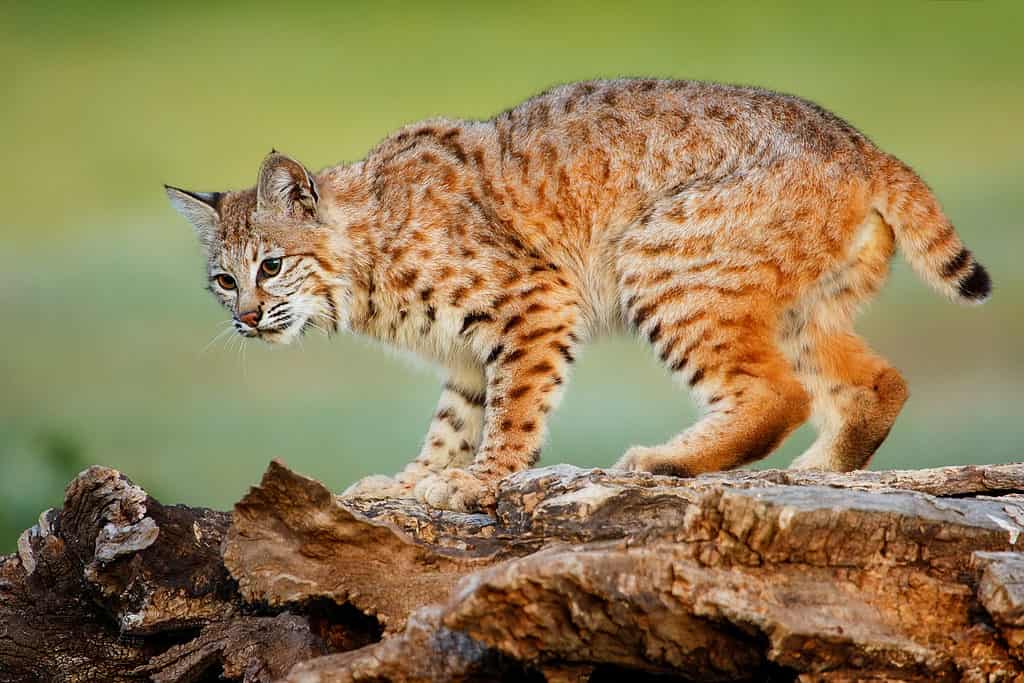
Bobcats can range from the size of a large housecat to a bit larger. They are not considered a threat to adults but could hurt a small child.
©Don Mammoser/Shutterstock.com
All over Oregon, you will see little signs of the bobcat, whether you see scratch marks or paw prints. However, you likely will not encounter them in person, even if you live in the western part of Oregon, where bobcats are most common. These reclusive creatures stay where they have cover. Plus, they often come out during dusk, evening, and dawn hours. If your home sits near a forest, you might see one of the 7,000 bobcats that call Oregon home if you pay attention.
7. Arizona
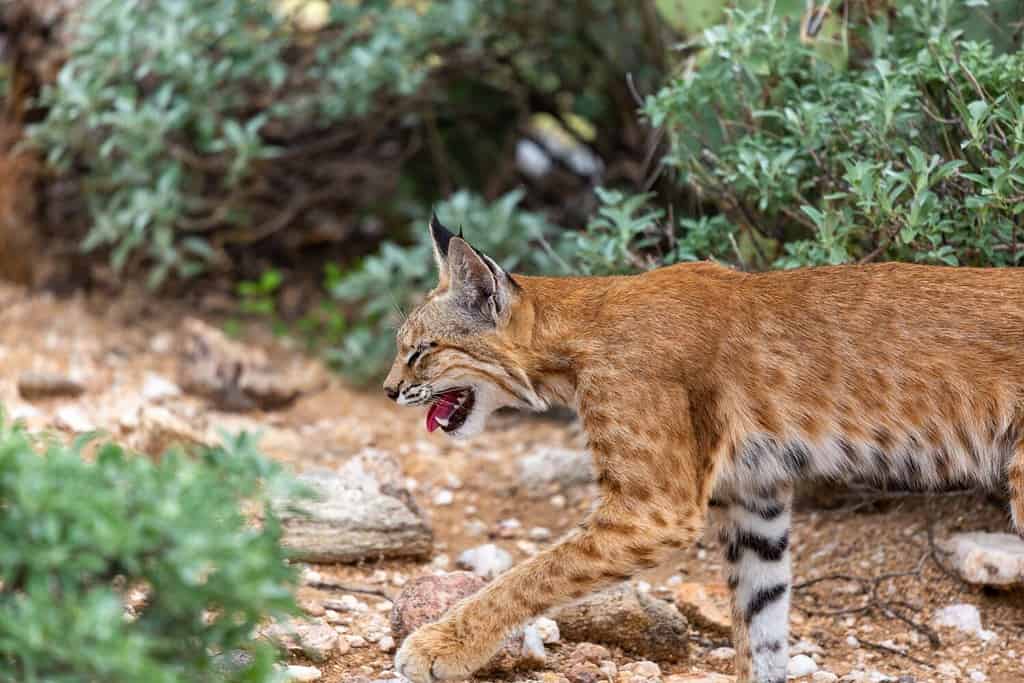
Attacks on humans by bobcats typically are linked to rabies or other disease.
©Charles T. Peden/Shutterstock.com
Bobcats have adapted to all types of habitats in Arizona, including all elevations. The most likely places to encounter a bobcat are the Sonoran desert, chaparral areas, and the outskirts of urban areas, where they can find plenty of food. Residents of suburban homes in Phoenix and Tucson have sighted wild cats in their backyards, rarely with any trouble. The Arizona Game and Fish Department recommends removing anything that can attract bobcats if you wish to dissuade them. Do not leave food for other animals outside. Also, pick up brush and rubbish in your yard regularly.
8. Florida
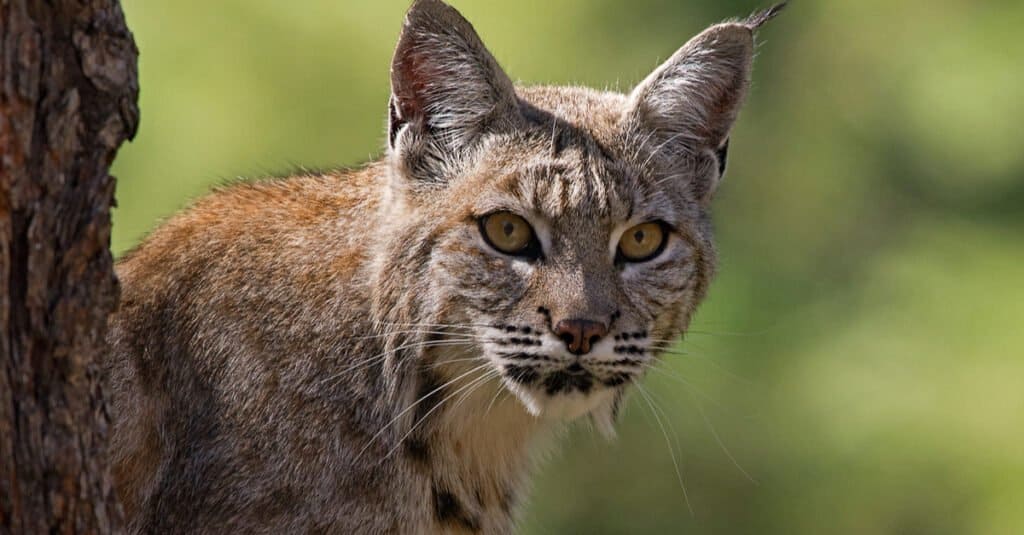
Although Florida is the only state where bobcat populations are decreasing, an estimated 300,000 bobcats call it home.
©Laurie E Wilson/Shutterstock.com
Bobcats live in all parts of Florida but are especially abundant in Southern Florida. Big Cypress National Preserve is home to many of them. They enjoy the cypress swamps and pinelands that provide plenty of food and shelter. A bobcat poses little threat to humans. You can easily deter one from coming into your yard or property with loud noises and sprinklers.
9. South Carolina
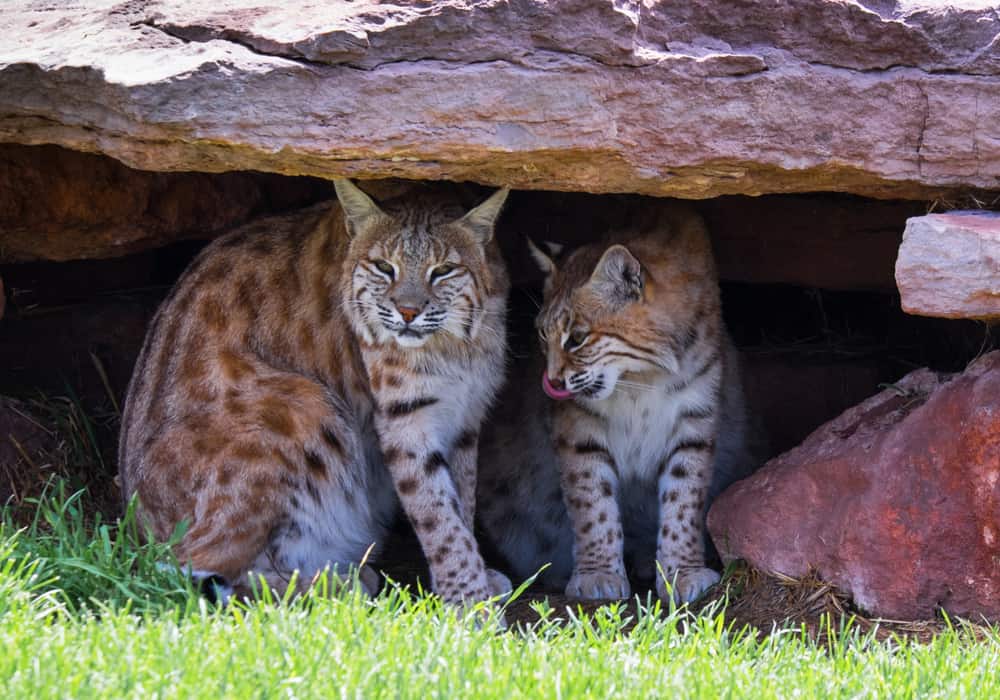
The highest bobcat population in South Carolina is in the lower Coastal Plain region.
© Johann Knox/Shutterstock.com
Across South Carolina, around 90,000 bobcats live and breed. Kiawah Island proudly protects its population of bobcats. Once fairly abundant, between 2017 and 2020, the population declined due to rodenticide use. Residents of Kiawah appreciate the way bobcats help control rodent and deer populations.
Thank you for reading! Have some feedback for us? Contact the AZ Animals editorial team.

